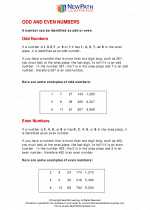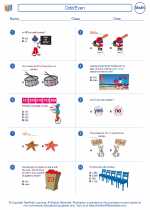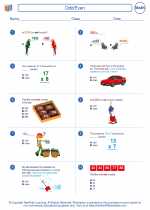Understanding Odd and Even Numbers
Numbers are categorized into two main groups: odd and even. Understanding the difference between odd and even numbers is an important fundamental concept in mathematics.
Even Numbers
An even number is a number that is exactly divisible by 2. This means that when you divide an even number by 2, there is no remainder. Even numbers always end in 0, 2, 4, 6, or 8. The first few even numbers are 2, 4, 6, 8, 10, and so on.
Odd Numbers
An odd number is a number that is not exactly divisible by 2. When you divide an odd number by 2, there is always a remainder of 1. Odd numbers always end in 1, 3, 5, 7, or 9. The first few odd numbers are 1, 3, 5, 7, 9, and so on.
Identifying Odd and Even Numbers
To determine whether a number is odd or even, you can look at the last digit of the number. If the last digit is 0, 2, 4, 6, or 8, the number is even. If the last digit is 1, 3, 5, 7, or 9, the number is odd.
Study Guide
- Practice identifying odd and even numbers up to 100.
- Write down a list of even numbers and odd numbers separately.
- Create flashcards with numbers on them and quiz yourself or a friend on whether each number is odd or even.
- Solve addition and subtraction problems involving odd and even numbers to understand their properties.
- Look for patterns in the multiplication tables for odd and even numbers.
Understanding odd and even numbers is an important foundation for more advanced mathematical concepts, such as divisibility rules and number patterns.
.◂Math Worksheets and Study Guides Fourth Grade. Odd/Even

 Worksheet/Answer key
Worksheet/Answer key
 Worksheet/Answer key
Worksheet/Answer key
 Worksheet/Answer key
Worksheet/Answer key
